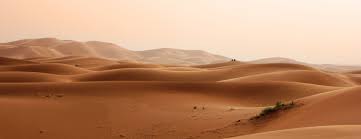4th Grade > Science
OUR ENVIRONMENT MCQs
Total Questions : 36
| Page 1 of 4 pages
Answer: Option B. -> Stratosphere
:
B
About 90% of ozone is present in the stratosphere. It is between 10 and 17 kilometers above the Earth's surface and extends up to 50 kilometers. This layer protects the Earth from the harmful UV rays.
:
B
About 90% of ozone is present in the stratosphere. It is between 10 and 17 kilometers above the Earth's surface and extends up to 50 kilometers. This layer protects the Earth from the harmful UV rays.
Answer: Option D. -> Equator
:
D
Equator is the imaginary line that passes through the centre of the Earth, dividing it into northern and southern hemispheres.
:
D
Equator is the imaginary line that passes through the centre of the Earth, dividing it into northern and southern hemispheres.
Answer: Option D. -> 78
:
D
Air is a mixture of gases. It contains about 78% nitrogen, 21% oxygen, 0.04% carbon dioxide, and very small amounts of othergases.
:
D
Air is a mixture of gases. It contains about 78% nitrogen, 21% oxygen, 0.04% carbon dioxide, and very small amounts of othergases.
Answer: Option A. -> star
:
A
The celestial bodies in the universe which generate light of their own are called stars.
Sun is the closest star to the Earth. It is made up of gases like hydrogen and helium. It is the primary source of light and energy of our solar system.
:
A
The celestial bodies in the universe which generate light of their own are called stars.
Sun is the closest star to the Earth. It is made up of gases like hydrogen and helium. It is the primary source of light and energy of our solar system.
Answer: Option B. -> Global warming
:
B
Increase in amount of carbon dioxide in air results in global warming and greenhouse effect.
Most of the radiations that Earth receives by the Sun is reflected back.Earth gets heated up by these reflected radiations and this heat is trapped by the atmosphere. This phenomenon is called green house effect and due to this heating there is an increase in the average temperature of the Earth's atmosphere. This iscalled global warming.
:
B
Increase in amount of carbon dioxide in air results in global warming and greenhouse effect.
Most of the radiations that Earth receives by the Sun is reflected back.Earth gets heated up by these reflected radiations and this heat is trapped by the atmosphere. This phenomenon is called green house effect and due to this heating there is an increase in the average temperature of the Earth's atmosphere. This iscalled global warming.
Answer: Option A. -> contamination of water bodies
:
A
Water pollution is the contamination of water bodies (e.g. lakes, rivers, oceans, aquifers and groundwater). Harmful substances such as sewage, toxic chemicals, silt, etc. gets mixed with water, therebypolluting it.
:
A
Water pollution is the contamination of water bodies (e.g. lakes, rivers, oceans, aquifers and groundwater). Harmful substances such as sewage, toxic chemicals, silt, etc. gets mixed with water, therebypolluting it.
Answer: Option A. -> Autumn
:
A
Autumn is one of the seasons in which the leaves of trees and plants turn pale. It is the transition between the summer and the winter seasons.In this season, the temperature gradually falls down and trees are seen shedding their leaves and flowers.
:
A
Autumn is one of the seasons in which the leaves of trees and plants turn pale. It is the transition between the summer and the winter seasons.In this season, the temperature gradually falls down and trees are seen shedding their leaves and flowers.
Answer: Option C. -> Carbon monoxide
:
C
Incomplete burning of fuel leads to the formation of carbon monoxide which is a poisonous gas. Carbon monoxide gas, when inhaled, combines with blood and reduces its oxygen carryingcapacity thereby damaging the nervous system and even results in death.
:
C
Incomplete burning of fuel leads to the formation of carbon monoxide which is a poisonous gas. Carbon monoxide gas, when inhaled, combines with blood and reduces its oxygen carryingcapacity thereby damaging the nervous system and even results in death.



















